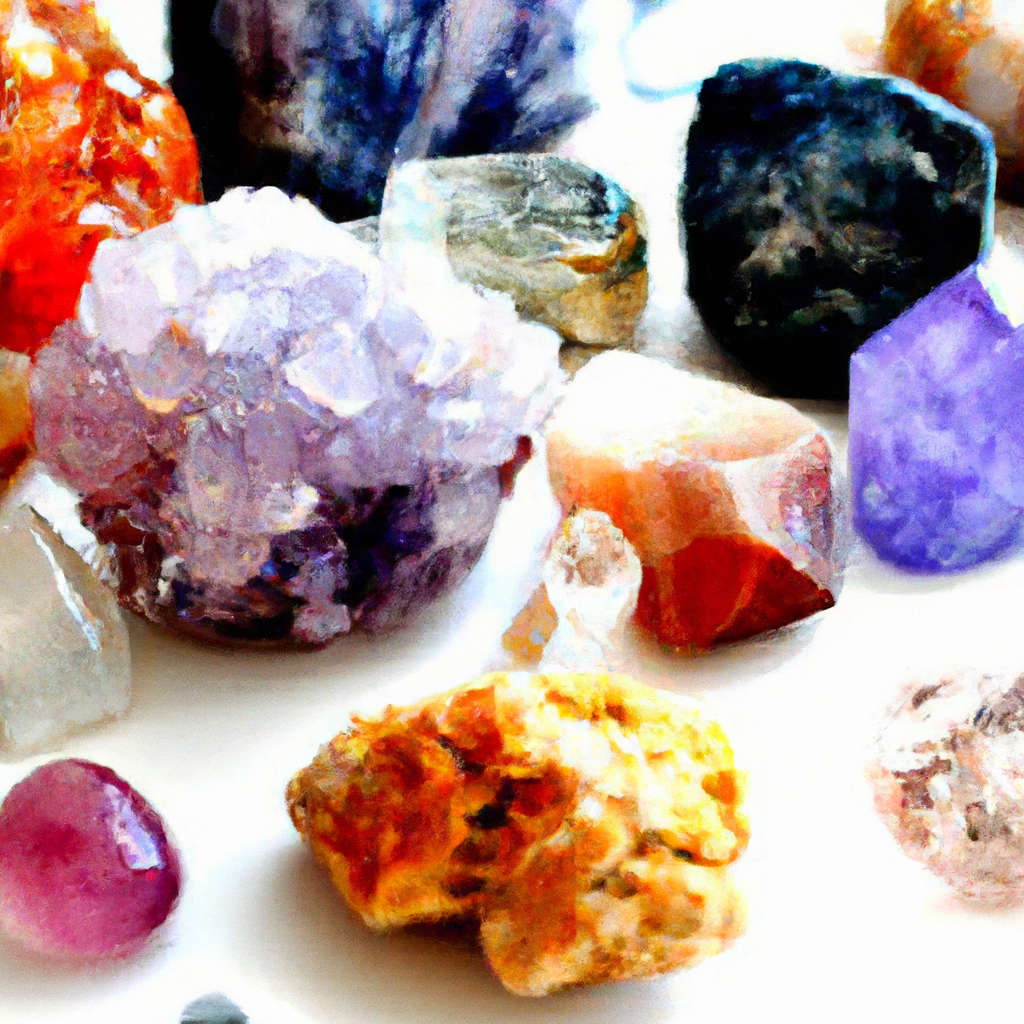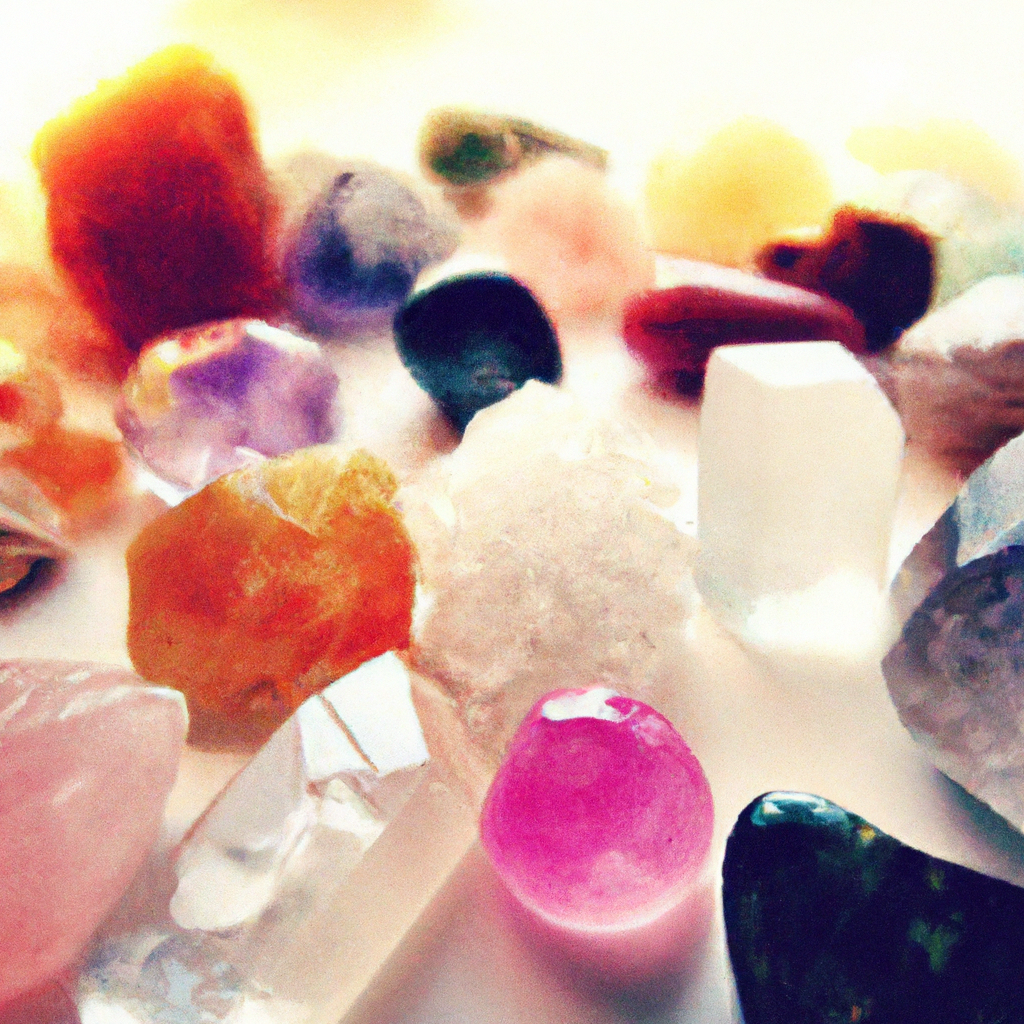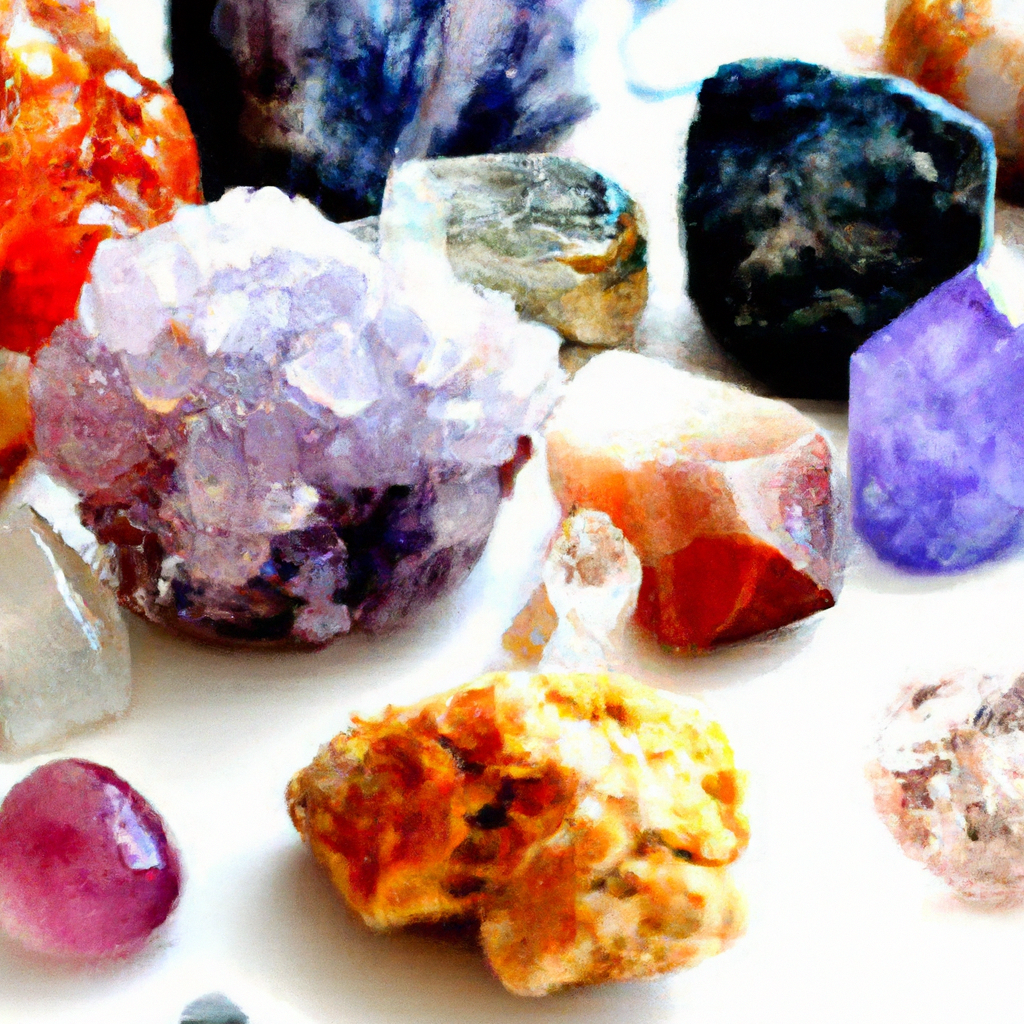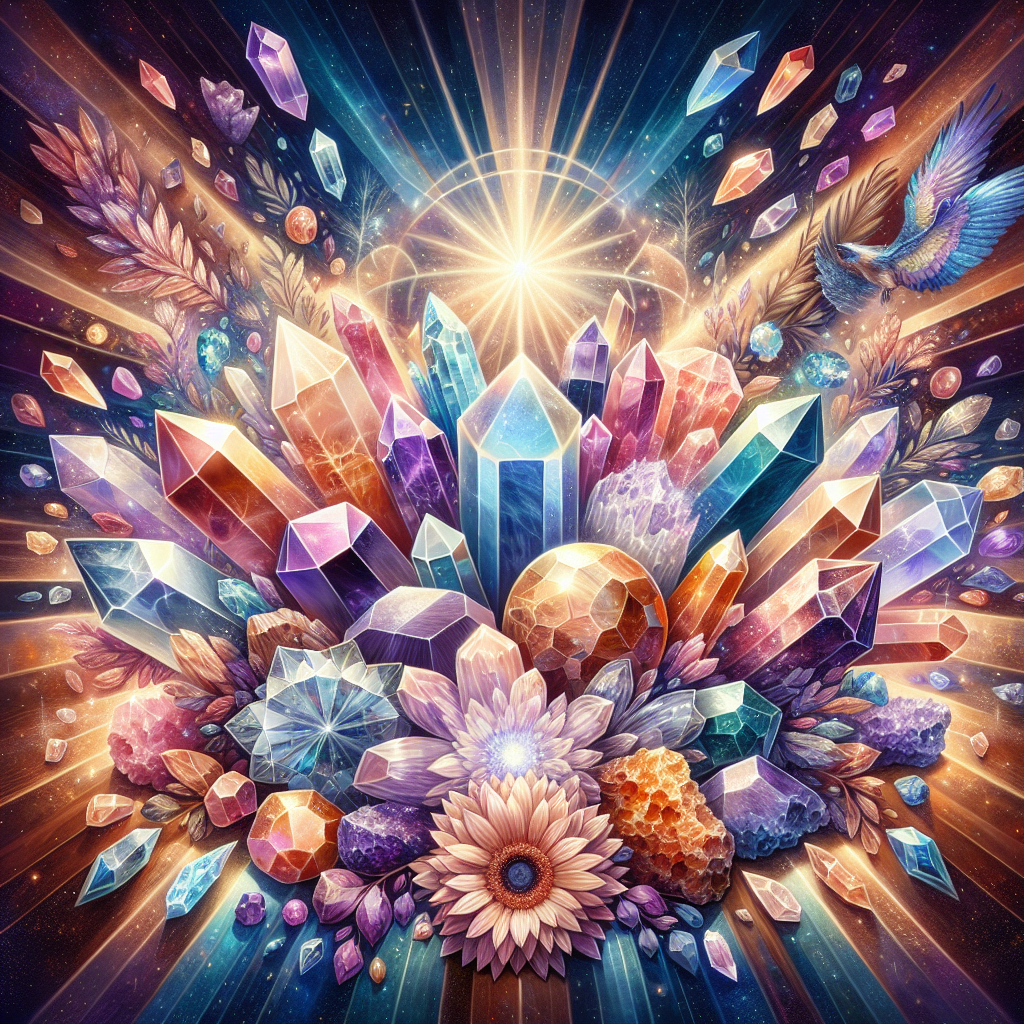In the realm of ancient civilizations, crystals possessed a tantalizing and enigmatic allure. As we gaze into the past, the utilization of crystals by these societies reveals a profound reverence for these mesmerizing gemstones. From the ancient Egyptians and their dedication to the crystal amulet, to the Mayans and their belief in the transcendental properties of crystals, we embark on a journey to uncover the mystical power and significance that crystals held in these revered civilizations. Join us as we explore the intriguing connection between ancient cultures and their reverence for these captivating gemstones.

Background of Crystal Use in Ancient Civilizations
Origins of crystal use
Crystals have been used by ancient civilizations for thousands of years, with evidence of their use dating back as far as the Paleolithic era. It is believed that the first humans to discover and utilize crystals were captivated by their beauty and unique properties. The exact origin of crystal use is difficult to determine, as it predates written records. However, archaeological findings suggest that early civilizations in Mesopotamia, Egypt, and the Indus Valley were among the first to incorporate crystals into their rituals and daily lives.
Significance of crystals in ancient societies
Crystals held great significance in the ancient world, representing various aspects of life and spirituality. They were viewed as powerful and mysterious objects that possessed the ability to connect humans with the divine. Ancient civilizations believed that crystals contained spiritual energy and could be used for healing, protection, and communication with the spiritual realm. Crystals were also associated with specific gods and goddesses, and were believed to possess their divine essence.
Emergence of crystals in ancient rituals and routines
As ancient societies developed complex rituals and routines, the use of crystals became deeply ingrained in their religious and spiritual practices. Crystals were used in ceremonies honoring the gods, such as offering crystals as gifts or placing them in sacred spaces. They were also used in divination practices, where the crystals were believed to reveal insights and messages from the divine. Crystals were seen as tools for enhancing meditation, promoting balance and harmony, and bringing about spiritual enlightenment.
Crystal Use in Ancient Egypt
Crystals in religious rituals
Ancient Egyptians revered crystals and considered them to be sacred objects. Crystals such as quartz, lapis lazuli, and carnelian were frequently used in religious rituals and ceremonies. The Egyptians believed that these crystals held divine energy and could be used to connect with their gods. They would often carve amulets and statues out of crystals, believing that these objects would serve as vessels for the gods and provide protection and guidance.
Crystals in burial practices
Crystals played a significant role in the burial practices of the ancient Egyptians. They believed in the concept of an afterlife and the need to preserve the physical body for the journey. Crystals such as turquoise and amethyst were placed within the burial chambers or tombs to guide and protect the deceased in the afterlife. They believed that these crystals possessed powerful energies that could assist the soul in its journey to the realm of the gods.
Specific crystals and their uses in Egypt
In addition to quartz, lapis lazuli, carnelian, turquoise, and amethyst, there were several other crystals that held importance in ancient Egyptian culture. Malachite, for instance, was associated with the goddess Hathor, representing joy and protection. Jasper was believed to have protective properties and was utilized in amulets and carvings. The Egyptians also prized emeralds, which symbolized rebirth and fertility, often placing them within tombs as symbols of eternal life.
Crystal Use in Ancient Greece
Healing and divination practices
In Ancient Greece, crystals were used for both healing and divination purposes. Greek physicians believed that crystals possessed unique energies that could restore balance to the body, mind, and spirit. They would use crystals such as amethyst, rose quartz, and clear quartz in their healing practices, placing them on the body or using them to create elixirs. Crystals were also utilized in divination practices, with practitioners using crystal balls or crystal pendulums to receive insights and guidance from the spiritual realm.
Crystals in Greek mythology
Crystals held a significant place in Greek mythology, often associated with gods and goddesses. For instance, the goddess Aphrodite was believed to have been born from the sea foam and was often depicted wearing jewelry adorned with pearls, associated with purity and love. The goddess Artemis was linked to the moon and silver, while Apollo, the god of light, healing, and prophecy, was represented by the sun and associated with golden crystals like citrine and topaz.
Diverse range of crystals in use
The ancient Greeks had an extensive range of crystals that they utilized for different purposes. Amethyst, with its calming and protective properties, was highly regarded and used in various forms, including jewelry, amulets, and drinking vessels. Hematite was used to promote courage and strength, while citrine was associated with abundance and prosperity. The Greeks also valued crystals such as garnet, aquamarine, and moonstone for their beauty and metaphysical properties.
Crystal Use in Ancient Rome
Crystals for health and wellness
The ancient Romans, like the Greeks, recognized the healing properties of crystals and incorporated them into their health and wellness practices. Crystals such as amethyst, rose quartz, and clear quartz were used in baths, massages, and elixirs to promote overall well-being and balance. The Romans believed that these crystals could purify the body, enhance vitality, and ward off negative energies.
Crystals in warfare and politics
Crystals also played a role in ancient Roman warfare and politics. Warriors and gladiators often carried crystals for protection and courage. Onyx, a black variety of quartz, was particularly popular for its protective properties. Crystals were also used in political settings, with Roman leaders wearing crystal amulets for luck, power, and influence. Crystals such as carnelian and green jasper were prized for their associations with leadership and success.
Influence of Rome on crystal use in Europe
The Roman Empire had a profound influence on the spread of crystal use throughout Europe. As the empire expanded, so did the popularity of crystals, with their use becoming more widespread and integrated into various aspects of daily life. Roman trade routes facilitated the exchange of crystals with other civilizations, further fueling their popularity. The Romans’ belief in the spiritual power of crystals helped to establish a lasting legacy that persisted long after the fall of the empire.

Crystal Use in Ancient India
Metaphysical properties of crystals
In ancient India, crystals were highly regarded for their metaphysical properties. They were considered to be conduits of divine energy, capable of enhancing one’s spiritual journey and promoting enlightenment. Ancient Indian texts, such as the Vedas and Upanishads, describe the healing and spiritual benefits of crystals in great detail, outlining their various uses, rituals, and symbolism.
Crystals in Ayurveda
Ayurvedic medicine, an ancient Indian holistic healing system, incorporated the use of crystals to restore balance and harmony in the body. Crystals were believed to emit specific vibrations and energies that could interact with the body’s energy centers, known as chakras. Each crystal was associated with a different chakra and used accordingly to heal and align the corresponding area of the body.
Crystals in Hindu religious practices
Crystals held a sacred place in Hindu rituals and ceremonies. They were used in temples and shrines to honor deities and enhance spiritual connections. Crystals such as clear quartz, amethyst, and crystal Shiva lingams were revered and considered auspicious. They were often placed on altars and used in meditation practices to deepen spiritual experiences and receive divine guidance.
Crystal Use in Ancient China
Role of crystals in Chinese medicine
Crystals played a pivotal role in traditional Chinese medicine, known as TCM. Similar to Ayurveda, TCM recognizes the energetic properties of crystals and their impact on the body. Crystals were used in acupuncture and acupressure techniques, as well as in healing modalities such as qigong and Tai Chi, to balance the flow of energy and promote overall well-being.
Crystals and feng shui
Feng shui, the ancient Chinese art of harmonizing the environment, also incorporated the use of crystals. Crystals were believed to emit positive energy, known as “chi,” and were strategically placed within homes and buildings to enhance the flow of this energy. Certain crystals, such as citrine and amethyst, were used to attract abundance and promote health and good fortune.
Symbolic meaning of crystals
In Chinese culture, crystals were associated with various symbolic meanings. Jade, for instance, was highly prized and regarded as a symbol of wealth, purity, and good luck. The Chinese also valued crystals such as rose quartz for their associations with love and relationships. Each crystal held its unique symbolism and was utilized accordingly to invite specific energies into one’s life.
Crystal Use in Pre-Columbian America
Crystals in Mayan rituals
The ancient Mayans held crystals in high regard and incorporated them into their rituals and ceremonies. Crystals such as jade, obsidian, and quartz were used for scrying, divination, and spiritual healing. Mayan priests and shamans believed that these crystals possessed the power to communicate with the gods and provide insights into the future.
Crystal use among the Aztecs
The Aztecs, like the Mayans, utilized crystals extensively in their religious practices. Crystals such as turquoise and amethyst were highly prized and considered sacred. They were used in offering rituals and ceremonies dedicated to the Aztec gods, as well as in healing practices. Crystals were believed to possess divine energies that could restore balance and promote physical and spiritual well-being.
Native American crystal practices
Native American cultures across North and South America also incorporated crystals into their spiritual traditions. Crystals such as quartz, turquoise, and selenite were used in rituals, ceremonies, and healing practices. Native Americans believed that these crystals could connect them with the spirit world and bring about physical and emotional healing. Crystals played a vital role in vision quests, purification rituals, and tribal ceremonies.
The Science Behind the Power of Crystals
Crystal formations and their unique properties
The power of crystals lies in their unique molecular structures and formations. Crystals are formed when atoms or molecules arrange themselves in a specific repeating pattern, resulting in their distinctive geometric shapes. This ordered structure gives crystals their ability to store, amplify, and transmit energy. Each crystal has a different molecular composition, leading to its unique properties and healing vibrations.
Investigation of healing claims
The scientific community has conducted various studies to investigate the healing claims associated with crystals. While the scientific evidence is still evolving, some research suggests that crystals may have an impact on the individual’s well-being through placebo effects, relaxation responses, and positive psychological experiences. Additionally, studies have shown that certain crystals, such as amethyst, have natural properties that make them suitable for technologies such as infrared thermography and piezoelectricity.
Modern perspectives on crystal energy
In modern times, crystal energy has gained popularity in alternative healing modalities and holistic practices. Many individuals believe that crystals possess energetic properties that can positively influence emotions, balance chakras, and enhance spiritual growth. Crystal therapy, crystal-infused products, and crystal meditation are some of the ways in which people integrate crystals into their daily lives. While the scientific community may not fully endorse the metaphysical aspects of crystal energy, many individuals find personal benefits and solace in their use.
Common Types of Crystals Used in Ancient Times
Quartz in various forms
Quartz crystals, such as clear quartz, rose quartz, and smoky quartz, were widely used in ancient civilizations. Clear quartz was highly valued for its versatile properties and considered a master healer. Rose quartz, known as the stone of love, was believed to attract and enhance love and compassion. Smoky quartz was associated with grounding energies and protection, shielding individuals from negative influences.
Amethyst and its uses
Amethyst, a purple variety of quartz, held great significance in ancient cultures. It was highly regarded for its spiritual properties and used to promote calmness, clarity, and connection to higher realms. Amethyst was often used in meditation practices, amulets, and jewelry. Its vibrant purple color was associated with royalty and divine wisdom.
The significance of lapis lazuli
Lapis lazuli, a deep blue stone with golden flecks, was highly prized in ancient civilizations for its intense color and mystical properties. It was believed to connect individuals with their inner truth and spiritual realms. Lapis lazuli was used in the creation of sacred objects, jewelry, and burial ornaments. In Ancient Egypt, it symbolized the heavens and was associated with royalty and divinity.
Other prominent crystals
In addition to quartz, amethyst, and lapis lazuli, there were various other crystals that held importance in ancient times. Turquoise, with its vibrant blue-green color, was valued for its protective and healing properties. Jade, considered a sacred stone in many cultures, symbolized purity, wisdom, and luck. Carnelian, a fiery orange stone, was associated with vitality and courage. Each crystal had its own unique qualities and played a significant role in ancient civilizations.
Legacy of Crystal Use in Today’s Society
Continued belief in the power of crystals
Despite the passage of time, the belief in the mystical power of crystals persists in modern society. Many individuals still turn to crystals for their perceived healing, protective, and spiritual properties. Crystals continue to be incorporated into holistic practices, alternative therapies, and spiritual ceremonies. The enduring belief in crystal energy is a testament to their lasting impact and the powerful connection humans have had with these precious stones throughout history.
Adaptations of ancient crystal practices
While ancient crystal practices have evolved over time, they have also been adapted to fit the demands and needs of modern society. Crystal healing practitioners have developed specific techniques and protocols for using crystals to assist in physical, emotional, and spiritual well-being. Crystal-infused beauty and skincare products, jewelry, and home decor have gained popularity as ways to incorporate crystals into daily life.
Role of crystals in contemporary spirituality and wellness
Crystals have found a place in contemporary spirituality and wellness practices. Many individuals use crystals as tools for meditation, intention setting, and personal growth. They are believed to assist in balancing energy centers, fostering positive emotions, and manifesting desired outcomes. Crystal shops, workshops, and online communities provide resources and guidance for those seeking to explore the potential benefits of crystals.
In conclusion, the use of crystals in ancient civilizations spanned across various cultures and played a significant role in religious, spiritual, and healing practices. Crystals were revered for their beauty, unique properties, and perceived connections to the divine. From the ancient Egyptians and Greeks to the Romans, Indians, Chinese, and pre-Columbian Americans, crystals were integrated into rituals, ceremonies, and everyday life. Today, the legacy of crystal use remains strong, with many individuals continuing to embrace the power and potential of these precious stones in their spiritual and wellness journeys.



